ARO’s Mass-Timber Visitors Center at Olana Brings a 150-Year-Old Artistic Vision Into the Present
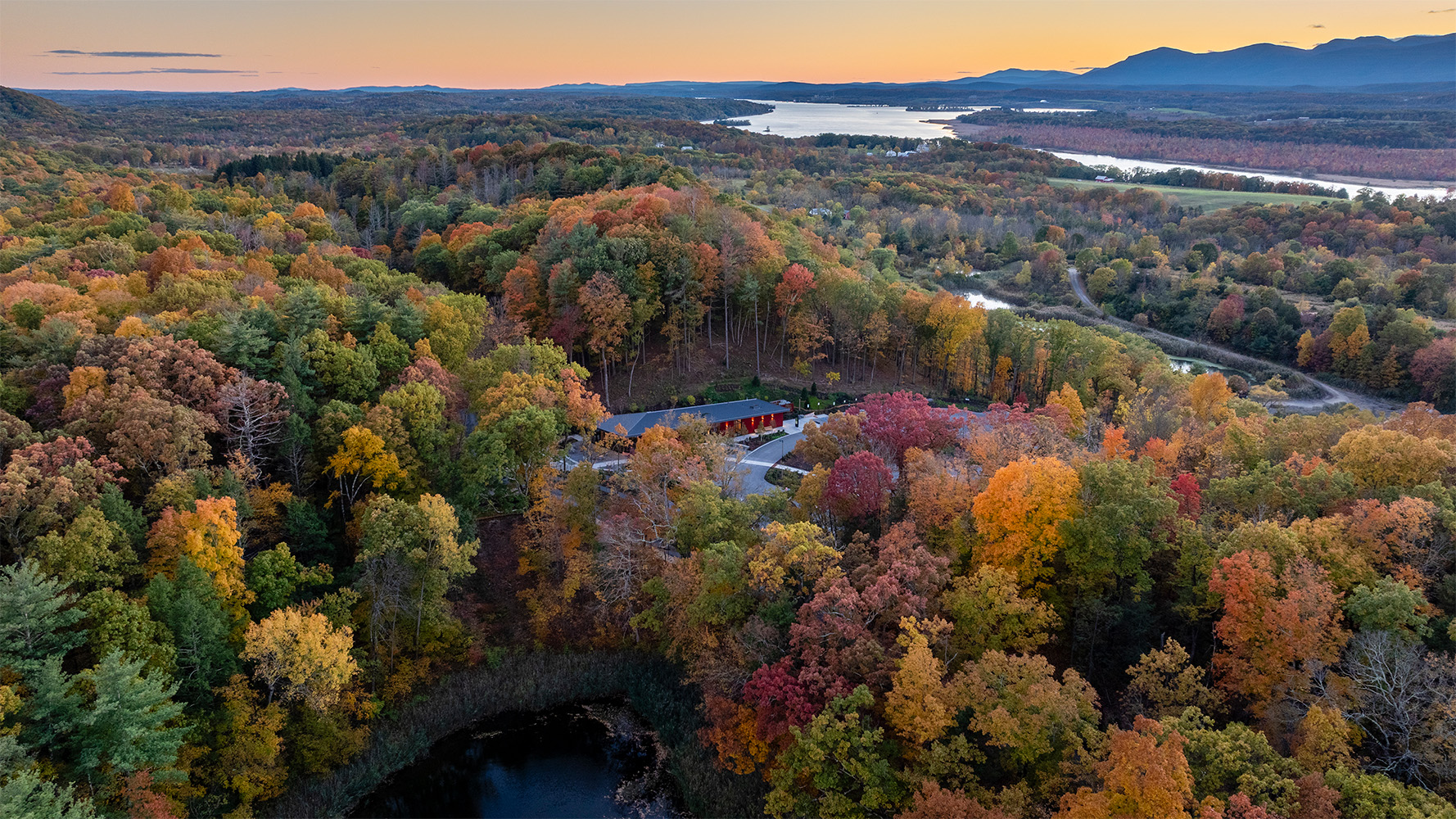
The Frederic Church Center for Art and Landscape by Architecture Research Office. Photo © Nick Ewing
In 1860, the renowned landscape painter Frederic Church purchased a mountainous tract of riverfront property, situated between the towns of Hudson and Catskill in New York’s Hudson Valley. With his wife, Church dedicated the rest of his life to carving out a haven on the Hudson, called Olana. The artist’s Persian-inspired villa, perched on the property’s highest point and visible from miles away, is certainly eye-catching. However, Church’s artistic philosophy is most evident in his careful orchestration of the surrounding 250 acres, which he conceived as a total work of art. "I can make more and better landscapes in this way than by tampering with canvas and paint in the studio,” he wrote of Olana in 1864. His interventions—planting thousands of trees, engineering a lake, and crafting views and vistas through subtle landscaping—transformed the property into a series of living compositions.
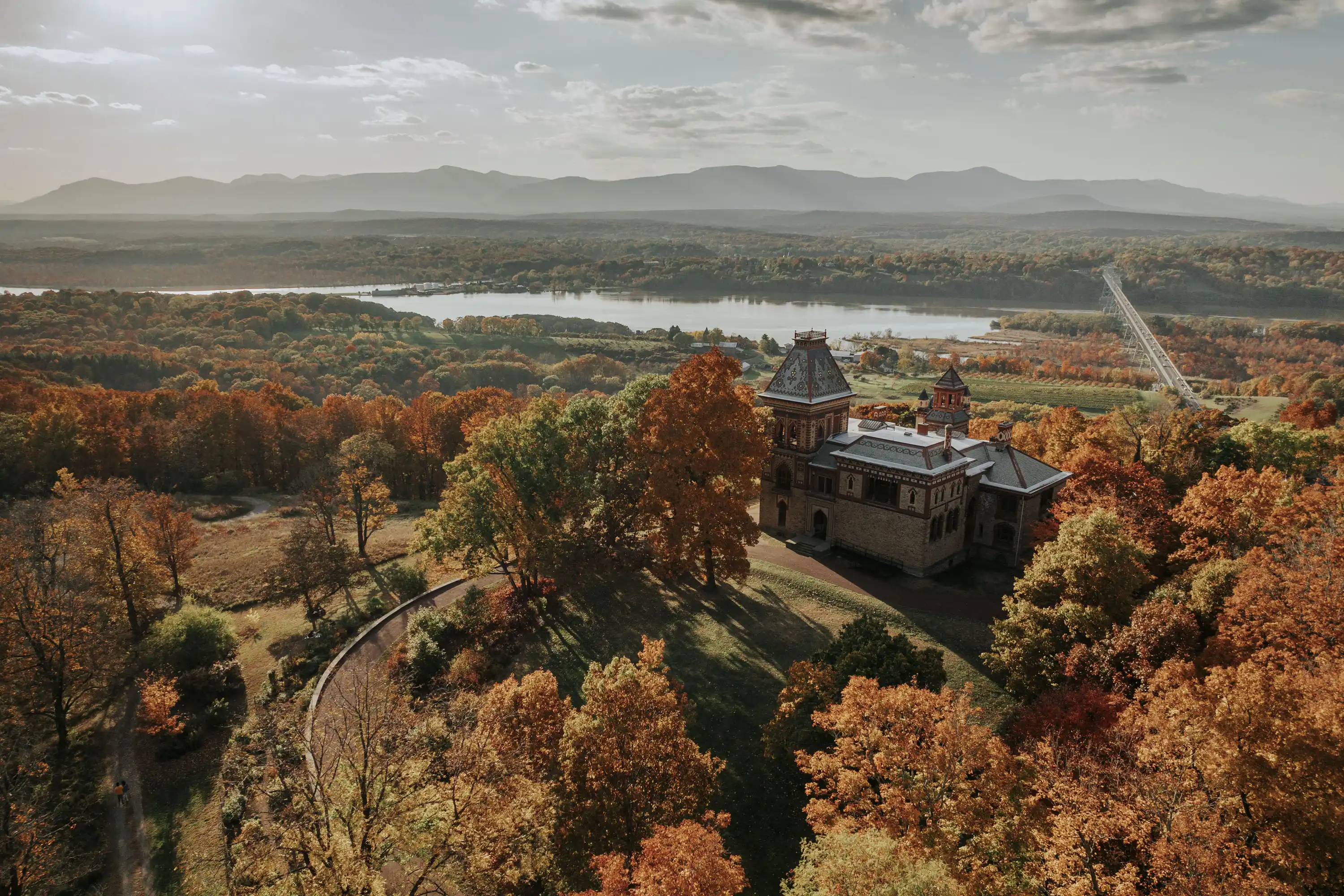
Photo © Nick Hubbard
In 1964, Church’s unified vision faced destruction when his descendants placed the property up for auction. A grassroots preservation campaign succeeded in transferring ownership to New York State in 1966, securing Olana's future as a state park and national landmark. Though it attracts hundreds of thousands of visitors annually, Olana saw little public land intervention until 2012, when The Olana Partnership engaged Nelson Byrd Woltz Landscape Architects (NBW) to develop a comprehensive landscape masterplan. Informed by intensive archival research, the ongoing endeavor aims to restore historic viewsheds, reinvigorate the grounds, and enhance the overall visitor experience.
A centerpiece of the renewal was the creation of a designated visitors center to alleviate pressure on the historic house while emphasizing the importance of the landscape in Church’s creation. Opened in October, the Frederic Church Center for Art and Landscape is the first new construction on the property since Church’s death in 1900, and the first mass timber project commissioned by New York State.
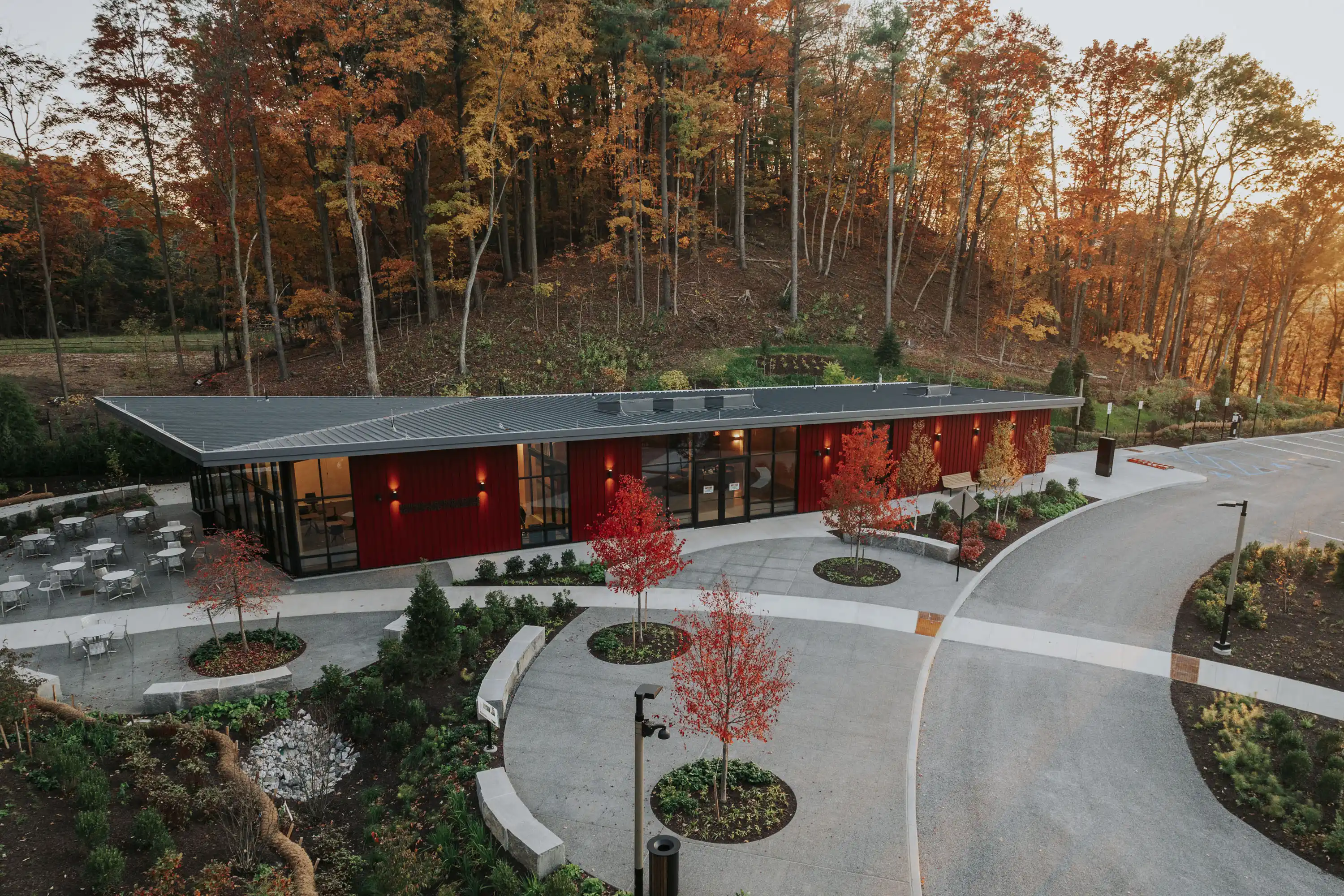
1

2
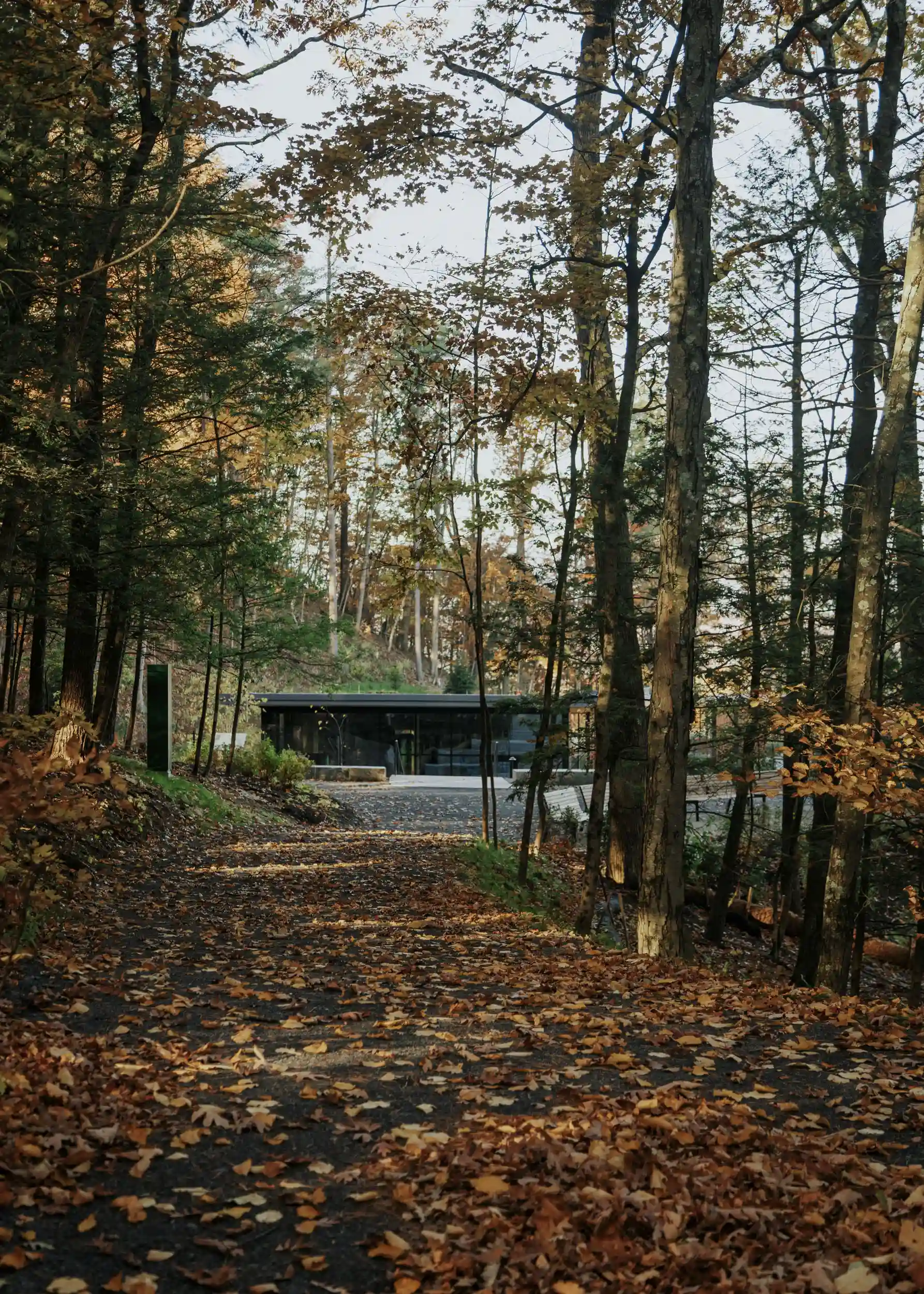
3
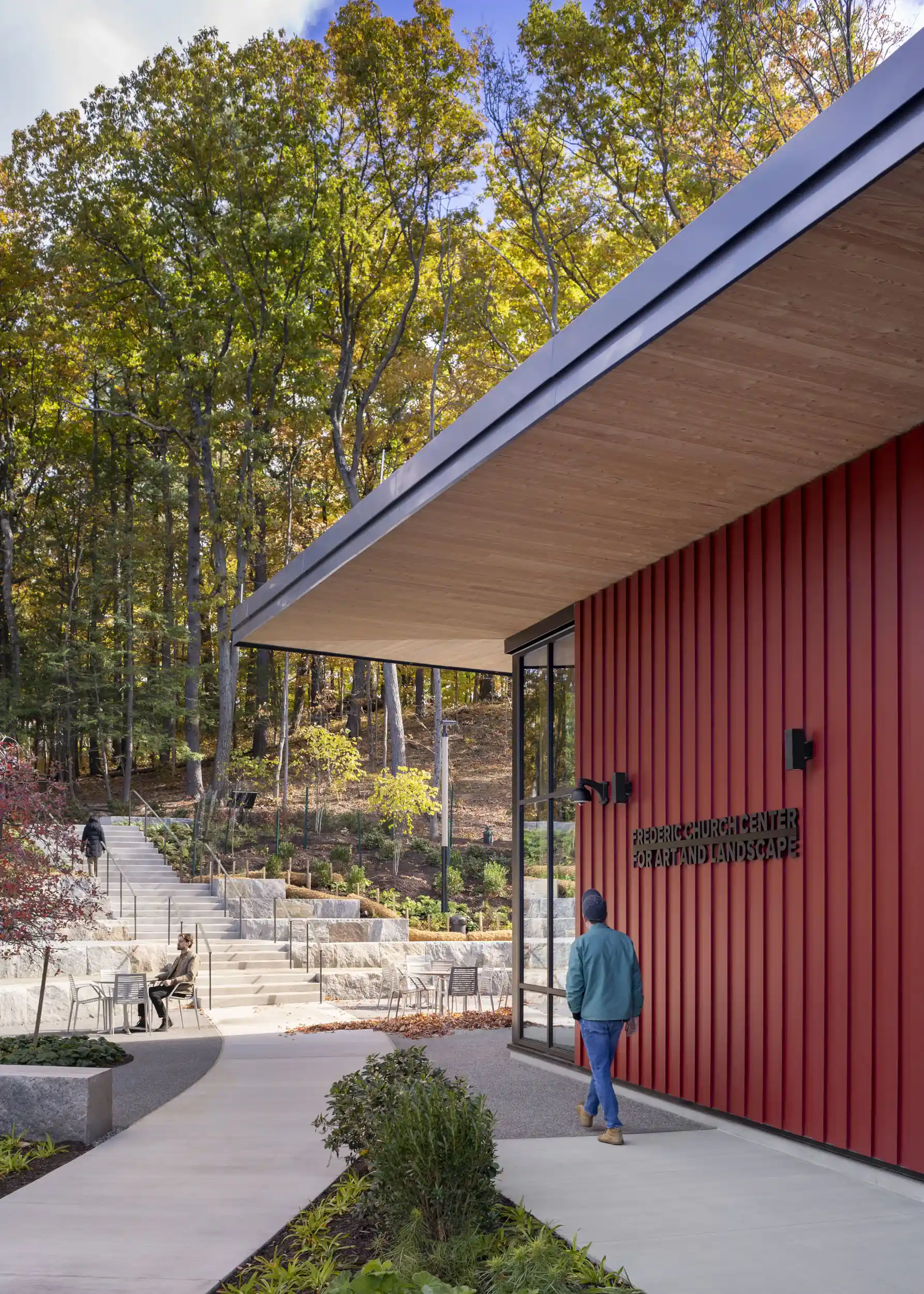
4
The Center was carefully sited by NBW to remain out of sight from the core historic property. Photos © Nick Hubbard (1-3); James Ewing (4)
Designed by Architecture Research Office (ARO)— a firm that previously interpreted and framed individual artistic visions with the Rothko Chapel masterplan in Houston and the Donald Judd House and Studio in New York—the modest 4,500-square-foot building is essential to the site’s enhanced operation. The single-story structure features expansive, bird-friendly glazing that provides ample daylighting and views and dark-red vertical wood siding that pays homage to Olana’s original agricultural buildings. Inside are restrooms (accessible via a separate entrance when the main building is closed), a café, a multipurpose room for visitors to linger while waiting for a guided house tour, and administrative spaces. The center opens onto a generous outdoor terrace inspired by Church’s “indoor-outdoor” rooms at the main house.
The clean, modern interiors are framed by Douglas Fir glulam beams, with brightly colored walls in the light-filled lobby, soon to host a site-specific exhibition about Olana’s history. This restraint is playfully balanced by an architectural "easter egg”—each individual restroom stall is colorfully tiled with a hue taken from the main house’s unique palette.
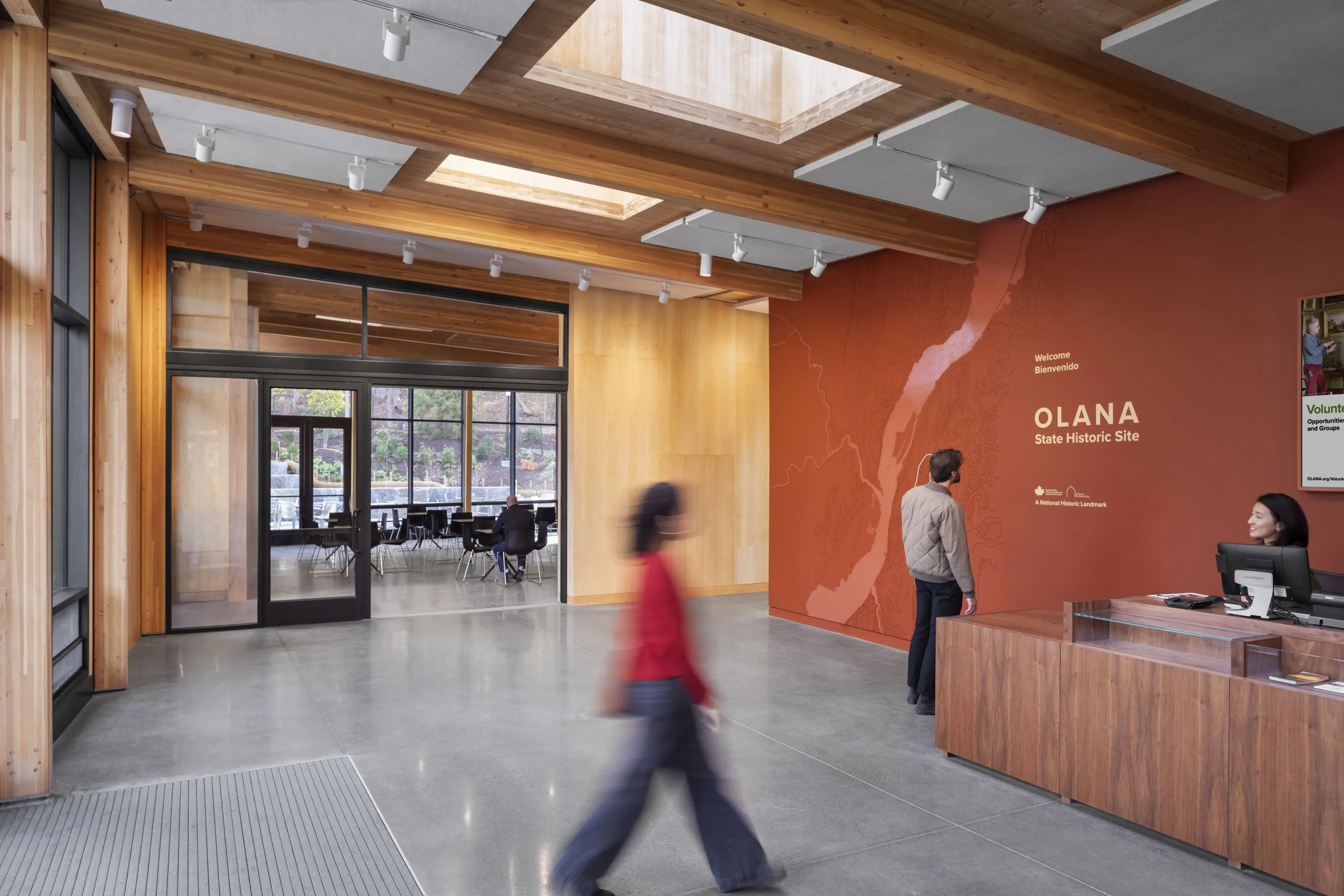
5

6
Douglas Fir glulam beams frame the Center's bright modern interiors. Photos © James Ewing
“This project is the capstone of the Olana Partnership’s effort to create a new way for visitors to understand the landscape as a threshold to Church, rather than the house as just a place with a view,” says ARO principal Adam Yarinsky.
To that end, the building’s subtly sloping roofline is inflected toward an essential Church-designed view, across the expansive lake to the main house, orientating visitors and introducing them to the estate’s overall narrative. Its location, near the property entrance, was carefully chosen by NBW to allow for views of much of Olana’s elevated landscape while remaining out of sight from other vantage points within the core historic property.
From the Center, visitors can access the carriage path network, designed by Church and maintained and modernized by the Olana Partnership, that leads up to the main house and around the property. But the design eschews direct stylistic references to that historic building, instead focusing on creating a contemporary gateway to Olana. “The visitors center isn’t a destination in and of itself,” says Yarinsky. “It’s guiding you to the main event.”

7
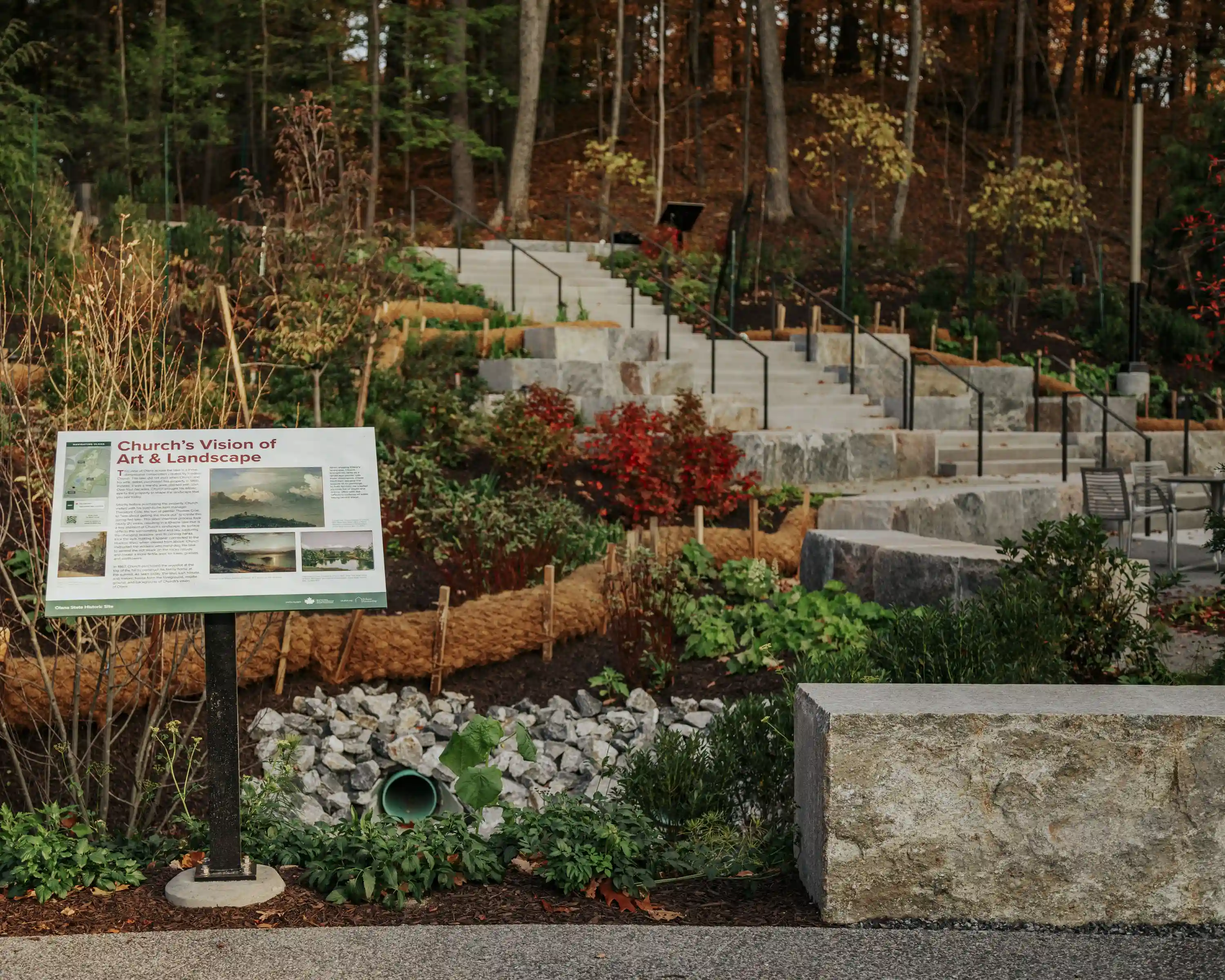
8
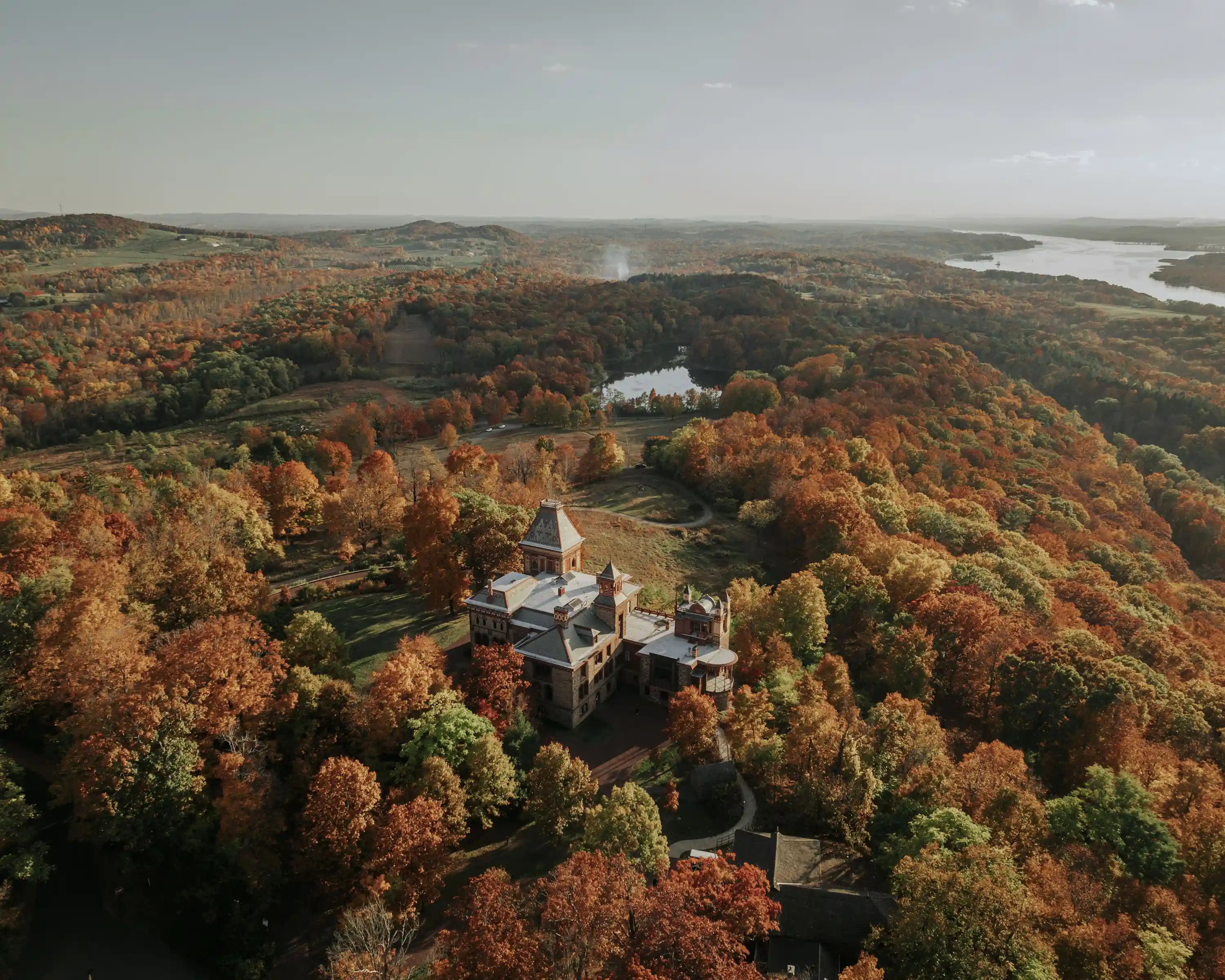
9
The Center opens out onto a paved terrace (8) that is oriented towards an essential Church-designed view (7) across the lake to the main house (9). Photos © Nick Hubbard
Church’s integrated vision of architecture and landscape was at the vanguard during the Victorian era, which was defined by strict delineations between the built and natural environment. With a sustainable design that includes an all-electric HVAC system, the Center for Art and Landscape honors and extends his forward-thinking environmental legacy. Plans are also in motion for a large-scale offsite solar array that will power the building along with others on the site. That choice, as much as any other, Yarinsky says, was vital to the project.
“The improved way in which you experience the site reinforces Church's relevance—these ideas of stewardship of and connection to nature are still very valid today,” says Yarinsky. “He's not just an artifact of 19th-century painting. There are many more stories to tell here.”

Photo © James Ewing



.jpg?height=200&t=1734636287&width=200)
